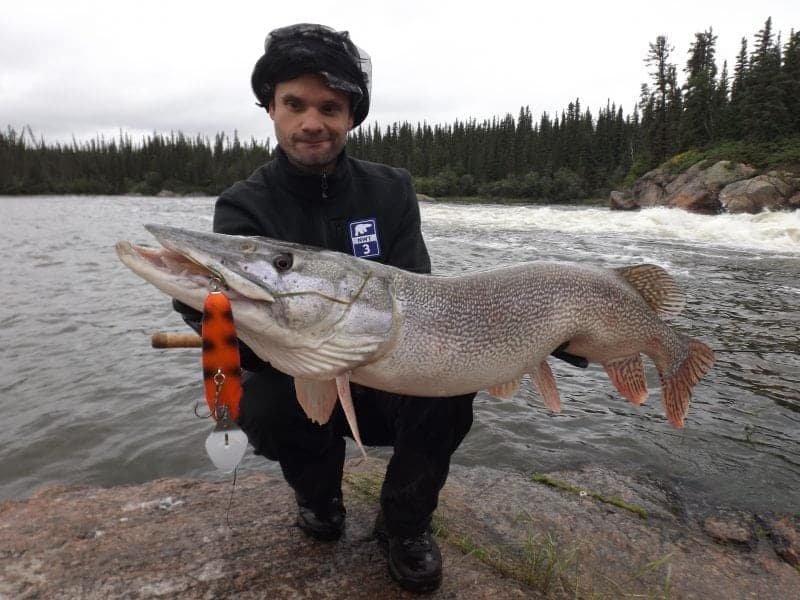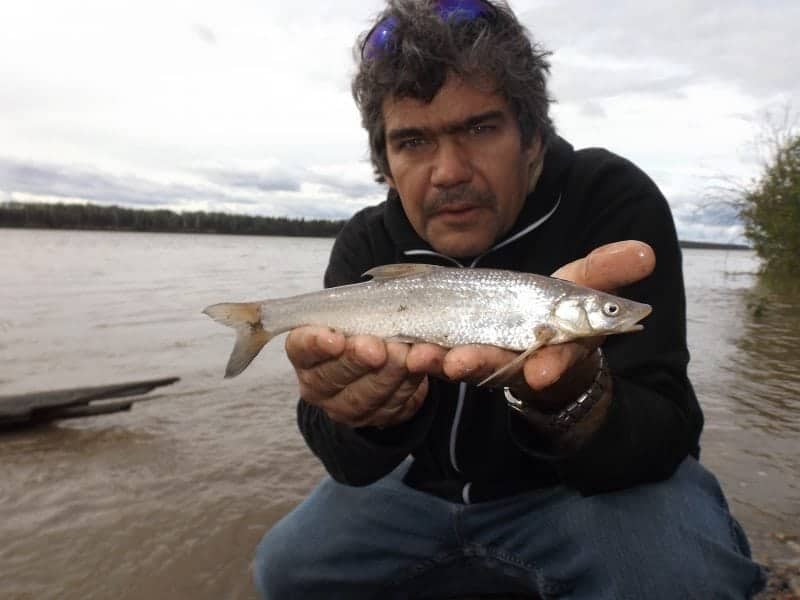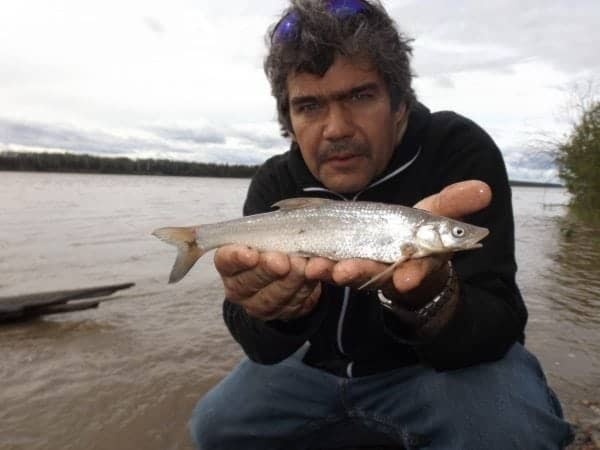Question: how many fishing maniacs out there would drive 1,300 km in the driving rain to catch an eight-inch flathead chub?

Mike W. Bryant/NNSl photo
I ask this question because I'm forced to admit there are at least two of them: myself, and Gijs Van Straten, a Generation X angling fanatic from The Netherlands who was making his second trip to the NWT last week in search of unique and purely northern species of fish – big and spectacular preferably but not necessarily.
Gijs and I share a passion. Over the last decade I’ve become increasingly attracted to a type of fishing called “lifelisting.” This pastime does not concern itself with catching fish for food or hanging pictures over the fireplace (although I still do both). The idea, for a lack of a better description, is to catch as many different species of fish as possible from wherever possible. It’s kind of like bird watching but with rod and reel – and a camera!
My lifelist currently stands at a 129 different species of fish, a minuscule number in the lifelisting World Olympics. I know people with more than 1,000. Before coming overseas, Gijs’ list had grown to 126.
Big fish are prized but little itty bitty guys count too. In fact, there is a whole subculture of anglers who target tiny fish with near microscopic hooks and spider web-thin lines. It’s called micro fishing and requires its adherents to carry around magnifying glasses and little tanks in which to film their catch.
The Northwest Territories is not an easy place for the lifelister to rack up numbers. For one, it’s a big piece of land and many of its waters where new species could be found are hard to reach. More critically, there are just simply not that many kinds of fish to be caught in the North.
Of the 100 species that call NWT waters home, from sharks to minnows, saltwater to fresh, I’ve caught 27 of them. The rest are either uncatchable or so remote I simply can’t reach them.
Anyway, Gijs’ big quest fish for his 2016 trip was the inconnu. My friend Gord Greening and I took him to a place where he caught more than a hundred of them.
The stars were not quite so aligned this time. We made it back to the big pike and inconnu spot but boat trouble conspired against our plan to visit the East Arm where Gijs hoped to catch Arctic grayling and lake trout.
Plan B to the Deh Cho
Plan B called for a road trip out to the Deh Cho. Grayling can be a tough find in summer with no boat or plane to reach them but there are other fish in the Deh Cho, large burbot in the Liard River, largescale sucker. Oh, and the flathead chub.

I first learned about flathead chub while in Fort Simpson about 15 years ago. There, children catch them from shore with small hooks baited with bacon. The habit lands this smallish fish a bit of a macabre reputation. If they’ll chew bacon off the ham bone what else …?
So on Friday we drove. We knew the mission was troubled as soon as we crossed a swollen Boundary Creek. From Stagg River onward came a deluge that followed us all the way to Blackstone Territorial Park.
We were like Joe Btfsplk with a black rain cloud hanging over us everywhere we went. We succeeded at Wallace Creek with a three-inch finescale dace, the only lifer of the trip as it turned out. But struck out at Sambaa Deh.
We then drove another four hours to find the Liard River 10 feet above its normal height for this time of year. Whole trees were bobbing in the current as they raced toward the Arctic Ocean.
I did manage the one chub but there were none for my Dutch friend.
“That's fishing,” Gijs said as we stood atop the muddy bank at campsite 6.
Was it worth it? Travelling all that distance only be waterlogged and skunked, other than one tiny minnow from Wallace Creek?
Well, it was an adventure and the pursuit of rarely seen fish is the spark that fuels the quest. Now Gijs will have to come back – hopefully to a working boat motor and no rain.
One final observation, the rain wasn't much fun to camp in but we had a fantastic experience at both Sambaa Deh and Blackstone territorial parks. These parks are world class and so are their operators. Keep up the good work!
We also really enjoyed the new stretch of chipseal at the Jean Marie River road access. A welcome respite from the mud. Cheers.
